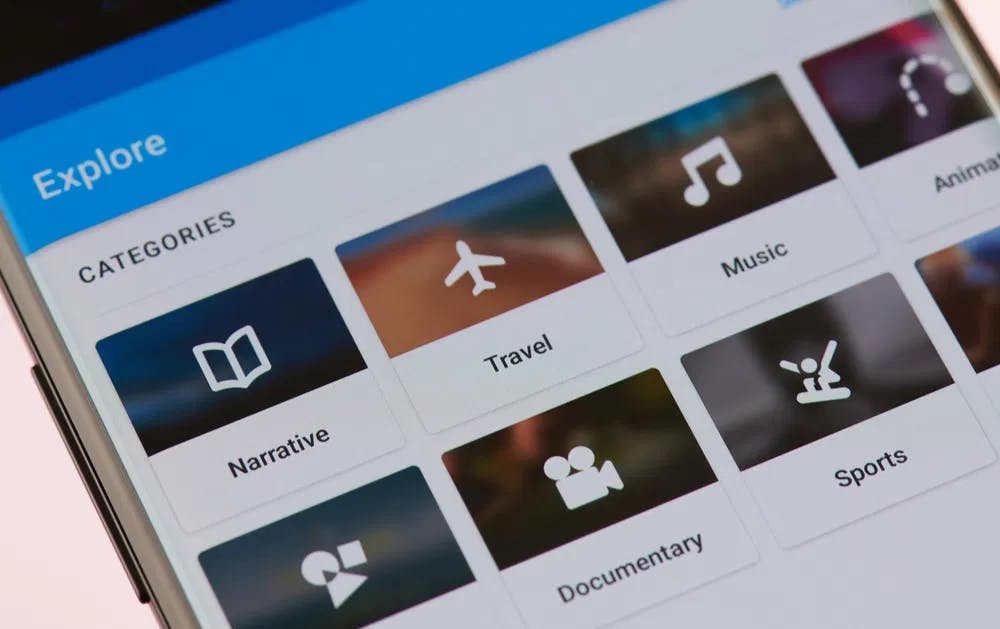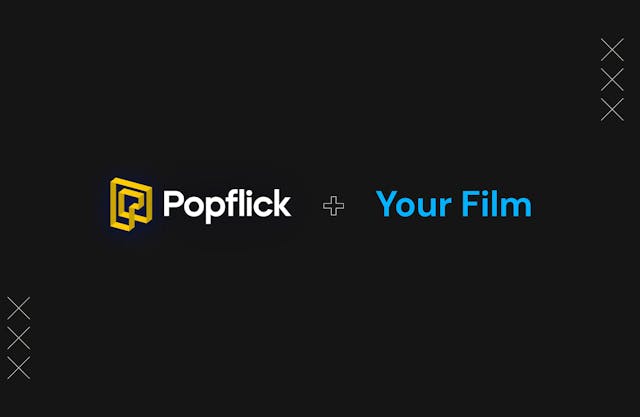Streaming Platforms That You Can Submit Your Flick To

Once upon a time, there was a dream. New filmmakers would use the internet to reach audiences, bypassing the usual gatekeepers: studios and distributors. It seemed that this ideal state of affairs would become true, but this ideal never quite materialized. In time, big streamers and tech companies became a new type of gatekeepers, melding the identities of producers, studios, distributors, and broadcasters. Vertical integration is back. As we ponder the art and the business of film distribution, we hope to examine the system with you so that you can navigate the labyrinth that separates your movie from viewers.
For some time, filmmakers could reach audiences directly by loading their movies and shorts on streaming services. There was virtually no wall separating creators from viewers. It is easy to think of that state of affairs as ideal, a paradise of popular art accessible to the masses. Alas, it was not meant to last forever. Servers loaded with movies that too few people watched compromised the balance sheet of streamers. Technology and business models were not aligned to make the system work.
Add to the mix an issue of quality control. A less-than-stellar product, by the halo effect, could tarnish the streamer’s brand perception. Chances are they did not have a budget large enough to hire an army of programmers to view everything that was getting uploaded. The first blow to this open system came in 2021 when Amazon stopped taking unsolicited films on Prime Video.
A List of Streaming Services You Can Submit Your Flick
There is also an added problem that comes with an abundance of choices. How do you get noticed in a crowd, especially when you are an up-and-coming talent who has not been able to build a fan base? You are competing with established pros who already have a foothold in traditional distribution systems. They can claim the attention of the public at large and built-in audiences. Eventually, branded channels and networks took over the wilds of the internet. Now, these streaming solutions are embracing commercials. It’s like we abandoned the traditional TV model only to take it back again, decimating the free spirit of the web in the process - and throwing away the free nature of broadcast TV. You must pay for something you used to get without spending a penny. Now, that is progress!
But not everything is lost. There are ways to position your flicks in streaming services, even if there are hurdles. These are a few of the most popular options.
Vimeo
Vimeo is the closest thing to democratic video commerce. You open your account, upload the video files and support content - like thumbnail images and trailers - set up a price, and wait for the magic to unfurl. VIMEO takes 10% of the revenue after deducting transaction fees from the viewer’s chosen payment method and sales taxes.
The greatest advantage of Vimeo is that you get to set your price point. Furthermore, you can run their engine on your website. This is a godsend if you already have a fan base flocking to your site.
One of the best examples of this model belongs to Long Island's preferred son, Hal Hartley. He is one of the greatest indie directors of the '90s and a pioneer in creating online fan communities - he even has a healthy following in Japan. Once Hollywood lost interest in him, he cultivated his website. There, he sells hard copies of his works in home video formats and streams them at halhartley.com, where he also sells books, CDs, mp3 downloads of his music, and assorted memorabilia. He is currently crowdfunding his next movie, "Decision To Land."

The Vimeo Menu of Doom: good luck getting Grandpa to find your movie / Photo courtesy of Dreamstie.
He is certainly a case study of how an indie filmmaker can survive and thrive in this new state of affairs. The Hartley Way is nominally the best because Vimeo is not very friendly when showcasing materials for wide audiences. For video professionals, the user interface may work by second nature, but you can imagine civilians struggling with it.
If you go for Vimeo, you must consider their reliance on PayPal. For unknown reasons, you need to connect your Vimeo site to a personal account and not a business account. If you don’t like to patronize Peter Thiel, well, you are a duck out of luck and need to seek other choices.
Vimeo Pros
Versatility, easy integration on your own website. Takes a low 10% fee off sales and rentals. No gatekeepers vetting your content, but you must follow guidelines.
Vimeo Cons
Somewhat hard to navigate. Corners you into using PayPal.
Prime Video Direct
The pioneering online book retailer is now the virtual department store of the world. You can get anything there, from prefab houses to medical care. And also movies. Many, many movies. Their streaming service, Prime Video, is an enticing option for indie filmmakers. Instead of burning discs, printing labels, mailing packages, and maintaining a virtual storefront - also at Amazon, natch! -; you can just upload your movie straight to them via Prime Video Direct and let the people stream it. Right? Well, yes, to a point.
The Amazon offshoot distinguished itself from YouTube by limiting content to feature-length movies and TV series. If you want to post a video of yourself making a killer omelet, that will not happen. The good news is that they focus on feature-length films and series, still making it filmmaker-friendly, up to a point.
Once you dig into the Terms and Conditions, newbie indie filmmakers can find a foreboding description of the type of content they accept: "…professionally produced, feature-length movies and TV shows that have been theatrically released, broadcast on a major TV network, or selected by a major film festival." Oh, well, major film festivals! Not any film festival, mind you. At least they did not ask that you were a prize winner. But let's not be pessimists. Fill up the application and wait for the verdict.

Prime Video Dream: jump through hoops and get your movie to dudes' desktops! / Photo courtesy of Dreamstime.
Even if you get in, nothing is guaranteed. If you don’t meet their desired engagement levels, the movie is unceremoniously dumped. Good luck finding out what those metrics are. Streamers are very skittish when it comes to revealing those numbers, just as they are coy about viewership data - which, incidentally, is a core issue in the ongoing SAG-AFTRA strike.
Another thing you must consider, whether you post your movie on Amazon Prime Video Direct or enter their service via an aggregator, is that recent changes in their Prime subscription terms affect the way people watch your movie. Starting in January 2024, Amazon changed the price structure of Prime Video subscriptions and opened the gates to advertising. If you want to remain ad-free, you have to pay an extra $2.99 a month on top of the $8.99 basic Prime Video subscription and the $11.99 paid by Amazon Prime users. That's $11.98 and $17.98, respectively. Well, the money for that expensive "Lord of the Rings" series has to come from somewhere!
What does it matter to you? Well, you have to accept that a good part of Amazon's user base will see your movie interrupted by advertising, and you have no control over where those ads come in. Furthermore, you have to formally grant them rights for ad-supported viewing on top of subscription rights. These changes come into play for movies submitted by aggregators and filmmakers who upload straight through Prime Video Direct.
The truth of the matter is that Amazon is not alone in this. Pretty much every big service has opened the gates to advertising, effectively ending the Golden Age of Streaming. Remember when they said that cable TV was dead? Well, its ghost just possessed the up-and-comer that dethroned it. The good news is that if users get your movie via digital rent or purchase of a virtual copy, they don't have to see any ads.
Prime Video Direct Pros
Huge user base. You can upload directly if you don't work with sales agents, aggregators, or any other intermediaries. Rent and purchase of digital copies are not marred by advertising.
Prime Video Direct Cons
Gatekeepers have to vet your movie using rather nebulous parameters. If the movie underperforms according to their standards, you get thrown off the service. Ads are unavoidable for users at the lowest subscription tier.
YouTube / Google Play
Back in 2006, the giant known as Google bought YouTube for $1.65 billion. Slowly but surely, it was like an adult controlling an unruly child. If you want to use the platform to distribute your movie, you have to go through the gatekeepers in the mother ship.
First, you must have a Google account. That’s easy. By now, every human being on the planet has one. But then, you have to fill out a Pre-Qualification Form to become a "partner." There, you will discover the system is fashioned for distributors and copyright holders with catalogs of content, theatrical releases, and box-office revenue records. They don’t say your first movie, that low budget marvel that cost you blood, sweat, and tears, is unwelcome. But it does not look too inviting.

How YouTube was tamed: Google plays gatekeeper for indie movies. / Photo courtesy of Dreamstime.
Take a seat while you wait for an answer. A “business development team” reviews requests “monthly” and “may get in touch to discuss next steps if they would like to move forward.” The keywords there are “may” and “would like.” The odds of your first movie passing the gate are slim.
But that video of you cooking that kick-ass omelet? Upload that baby on YouTube NOW!
YouTube / Goole Play Pros
Huge brand recognition. Pretty much everybody uses the platforms.
YouTube / Google Play Cons
There is an annoying application process with undefined time frames and quality standards. The scales seem to be tilted toward big players already rooted in the industry.
Aggregators
Aggregators are an important link in the chain that connects you with audiences. Don’t think of them as obstacles, but as a resource that can help you. The trick is to think of them as programmers or curators who know what the big streamers want and take on the work of selecting viable content for them. That is why the Google form seems tailored for them.
The trick is to read carefully their contract terms and choose the one you feel most comfortable with. Some might require money upfront; others request exclusivity. Some don’t limit their outreach; others work exclusively with the big streamers. Check out what markets they work with, too, if you are aiming for a particular geographical region.
If you don’t miss anything, reach out to them! ODMedia is one of the biggest, with direct lines to Netflix, AppleTV, Google Play, Prime Video, and Roku. Also, check out Filmhub, Bitmax and Quiver Digital.
Aggregators Pros
They offer a pretty much hands-off process. They have established relationships with the major streamers, that is, those that are not regularly open for newbie indie directors. There is no overbearing gatekeeping.
Aggregators Cons
Your movie may get lost in the abundance of their catalogs. You still need to promote your work. Not all will champion your work at the biggest platform. May be a dump-and-run deal.
Popflick
Then again, you can always reach out to your friends at Popflick! We are a movie-mad startup born to help indie filmmakers reach out to audiences with a friendly streaming platform. The application process is streamlined. Just fill out this form and get the ball rolling. Our screening process is fast, and you get personalized attention from our team members. Imagine that! A human being that responds to your queries promptly. No waiting a month to see if somebody sends an email - Hi, Google Video! -.
We know indie filmmakers need to recoup the cost of their productions, and our pricing structure reflects that. You get to keep 50% of the revenue your movie generates. Our streaming service is short-film friendly, and we accept production in every genre. Your work will stand side by side with Aardman Studios’ “Creature Comforts,” cult classic movies from Roger Corman himself, the latest from South Korean Cinema, and modern American indie treasures like “Nowhere Man and a Whiskey Girl.”
Regarding streaming platforms where you can submit your flick, we are the prime destination to watch indie films online. Popflick will go the extra mile for you. For us, your film is a piece of life, not just content.
Popflick Pros
Submitting your film is fast and easy. Straightforward communication. Tools to track your movie's performance. Short-friendly. Your movie is always free of advertising.
Popflick Cons
Are you kidding me? We have no cons. Submit your film now.
Want to get an email when we publish new content?
Subscribe today































